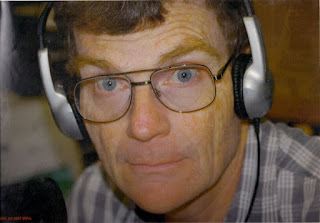Simple Antennas for the Hawaiian Amateur Radio Operator--a continuing series
Those of us who are forced by circumstances to operate with compromise antennas may be interested in a new self-published book by Tom Schiller, N6BT, called "Array of Light" (3rd edition). I found a review of the book in the February 2012 "CQ", p. 74. Tom is a co-founder of Team Vertical and, along with his father, co-owned and operated Force 12 Antennas. Tom's basic idea is that "everything works" to some degree in the antenna realm. A quick review of the July 2000 issue of "QST" quickly refreshed my memory about Tom's seemingly outlandish experiment using a 150-watt light bulb mounted on a 4-foot fence post as an antenna. Using his Kenwood TS-850S, he proceeded to work the world using the light bulb as an antenna. The project was good enough to land Tom a "Cover Plaque Award" for that issue. Tom easily convinced me that "everything" does "work", even in such a crude model as a light bulb. Tom goes f
